
Ice Baths: A Key to Enhanced Recovery and Vitality for Athletes
Explore how ice baths can boost recovery and enhance vitality for athletes. Discover practical tips and insights to elevate your performance. Read more!
Spend Over £500 To Get Free UK Delivery - Excludes Certain Postcodes & Round Ice Baths
Delivery to Ireland now available

Dipping yourself in an ice bath for 30 days triggers considerable physiological adaptations such as reduced muscle soreness, improved circulation, and potentially heightened immune function. You may also notice an unexpected boost in mental resilience and mood regulation. But ice bathing isn’t without risks, such as hypothermia or flare-ups of existing heart conditions. Intrigued? Let’s dig a bit deeper to discover what science, history and personal experiences say about this invigorating practice.
Regular ice baths over 30 days can reduce muscle soreness and inflammation, aiding faster recovery from exercise.
Consistent cold exposure may improve immune function and circulation, enhancing overall health and wellness.
Participants often report enhanced mental resilience, increased positivity, and improved mood after a month of ice baths.
Potential risks include hypothermia and exacerbation of underlying heart conditions, emphasizing the need for medical consultation before starting.
Personal experiences from the 30-day ice bath challenge highlight tangible physical benefits and mental rewards, but also potential health complications.
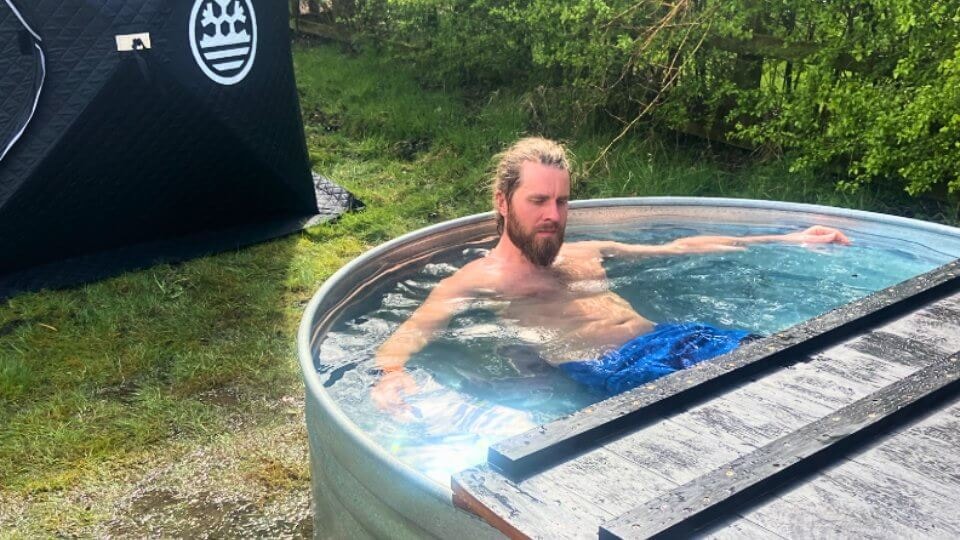
While you may associate ice baths with athletes and hardcore fitness enthusiasts, there’s compelling science behind this chilly regimen.
Cold water immersion is believed to reduce muscle soreness by constricting blood vessels and decreasing metabolic activity, which reduces swelling and tissue breakdown. Simultaneously, it may boost your immune system by increasing the circulation of immune cells.
In addition, exposing yourself to cold water regularly can improve circulation by forcing blood to flow more efficiently, potentially leading to better cardiovascular health.
Finally, regularly immersing yourself in cold water can build mental resilience as you learn to control your response to stress, which can extend to other areas of your life as well.
Although it may seem like a modern trend, the practice of ice baths dates back centuries. Ancient civilizations used cold water therapy as a holistic method of healing. Greeks and Romans recognised the health benefits of incorporating ice baths into their medical treatments.
Fast forward to the 19th century, when people began to use ice baths for muscle recovery after intense physical activity. Modern athletes and fitness enthusiasts now swear by this practice for its physiological adaptations. Despite the discomfort, they plunge into icy waters, hoping to boost their body’s resilience and recovery capabilities.
As the popularity of ice baths continues to grow, it’s evident that this age-old practice holds a significant place in the future of wellness and recovery.
To fully grasp the impact of ice baths, you need to understand the physiological effects of cold exposure on your body. When you plunge into icy water, your body triggers a cold shock response. This isn’t just an adrenaline rush; it’s a total physiological shift.
Your blood vessels constrict, improving circulation and helping to flush toxins from your system. Regular exposure can lead to reduced muscle soreness and an improved immune system function.
Not only that, but the sheer mental resilience required to endure cold exposure can have profound effects on your mindset, instilling a sense of toughness and determination.
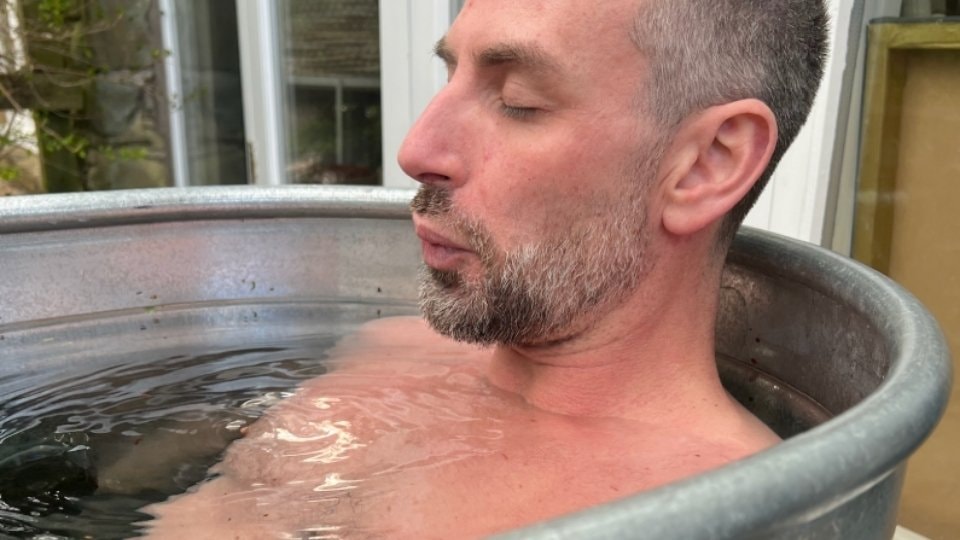
Given the rigorous demands of regular exercise, quick and effective recovery methods are essential for athletes and fitness enthusiasts alike.
You might find your answer in ice baths, an intriguing form of cold therapy. Submerging in freezing water might seem intimidating, but research suggests it aids in muscle recovery.
How? By reducing muscle soreness and inflammation resulting from exercise-induced muscle damage. When you plunge into an ice bath, your blood vessels constrict, reducing inflammation and metabolic activity.
Once you exit, the blood races back, accelerating the elimination of waste products like lactic acid. This means you bounce back faster, ready to hit the next workout.
While you might associate ice baths primarily with muscle recovery, they could also be giving your immune system a boost.
Cold exposure triggers physiological adaptations that stimulate your immune system. When you plunge into icy water, your body responds by increasing white blood cell production – the soldiers of your immune system.
Studies suggest that this ramped-up immune activity might lead to health benefits like fewer colds and infections. However, the exact mechanisms behind these effects are still being explored.
As always, you should consult a healthcare professional before diving into this cold therapy. They’ll help you navigate potential risks and maximize the health benefits, ensuring a safe and effective ice bath experience.

Beyond the potential physical benefits and immune system enhancements, regular cold exposure, like that experienced in ice baths, can have profound psychological impacts.
Your mental health can greatly improve with consistent exposure to cold, as it directly influences your mood. Studies report an elevated sense of well-being and positivity after cold exposure, indicating improved mood.
This psychological impact is a fascinating aspect of cold immersion therapy. It can contribute to increased mental resilience over time, as you train your mind to tolerate discomfort and endure harsh conditions.
Though it may seem counterintuitive, subjecting yourself to such an extreme may indeed be a pathway to better mental health.
Despite the initial discomfort, regularly taking ice baths can especially bolster your mental resilience. Immersion in cold water introduces a controlled stressor, challenging you to maintain calm and focus.
Over time, this repeated exposure to cold conditions your mind to better handle stress, thus enhancing mental resilience. Additionally, physiological adaptations occur, such as improved circulation, which subsequently leads to an improved mood.
Regularly exposing your body to cold water can stimulate the production of endorphins, the body’s natural mood elevators. As a result, ice baths don’t just offer physical benefits, but also significant mental rewards.
Hence, beyond the physical recovery and rejuvenation, the mental fortitude gained from this practice is a compelling reason to embrace the chill.
Before you plunge into the icy depths of regular cold water immersion, it’s vital to acknowledge the potential risks. One of the most significant is hypothermia, a dangerous drop in body temperature that requires immediate medical care.
Improper ice bath practices can lead to this life-threatening condition. To avoid such risks, follow proper protocols like gradually lowering your body temperature and limiting immersion duration.
Also, never engage in this practice alone. Always have someone nearby who can assist or seek help if necessary. Your safety is paramount, so it’s important to educate yourself on all safety precautions before starting.
Finally, always consult with a healthcare professional to assess your individual risk and suitability for cold water immersion.

If you’re considering integrating ice baths into your wellness routine, there are a few critical steps to follow.
Start gradually, introducing your body to cold water immersion slowly to build resilience. Try quick cold showers initially, then progressively extend the duration.
For ice baths, aim for a water temperature between 50 to 59 degrees Fahrenheit. Limit your immersion time to 15 minutes at most to avoid hypothermia.
Consistent practice can enhance recovery and physical performance. A systematic approach helps develop mental resilience, a key benefit of ice baths.
Remember, this isn’t a one-size-fits-all solution. Monitor your body’s responses and adjust accordingly.
Don’t forget to consult your healthcare provider before starting, especially if you have underlying health issues.
Despite their widespread use in professional sports and wellness routines, ice baths are often shrouded in mystery and misconceptions. One myth is that they only offer reduced muscle soreness.
Sure, they’re great for that, but the benefits don’t stop there. Regular dives into the icy depths can improve circulation, enhancing overall cardiovascular health. Furthermore, they help build mental resilience and may even boost immune system function.
However, it’s important to be aware of the risks, such as hypothermia and potential cardiac issues. Always consult with a healthcare professional before starting.
Though ice baths have gained popularity as a recovery method, it’s important to understand how they stack up against other techniques.
When you take a cold plunge, you might notice an immediate reduction in muscle soreness. This is because the cold temperature helps reduce inflammation, speeding up your recovery. In addition, ice baths can promote improved circulation, driving oxygen-rich blood to your muscles.
However, the potential risks can’t be ignored. While the shock of cold water aids recovery, it might also put strain on your heart.
After 30 days of ice baths, you’ll likely notice improved skin health. The cold exposure tightens your skin, reduces puffiness, and boosts circulation, leaving you with a more youthful, radiant appearance.
Yes, you’ve alternatives for similar benefits. Try contrast water therapy, compression garments, or active recovery methods. They’ll reduce inflammation, enhance recovery, and boost circulation, much like ice baths. Always consult your physician before starting any new regimen.
Like a cautious gardener planting seeds, you shouldn’t start regular ice baths until your late teens. Your body’s still developing. Always consult a healthcare professional first to guarantee it’s safe and beneficial for your specific circumstances.
After 30 days of ice baths, you’ll likely experience less muscle soreness, improved recovery, and mental clarity. However, it’s essential to consult a healthcare provider before starting such a regimen to avoid potential risks.
In summary, submerging yourself in icy waters for 30 days can be a chilling adventure with potential gains. You could become a superhuman with enhanced recovery, boosted immunity, and a steel-trap mind. But remember, always consult a professional before diving into this icy challenge.

Founder of Urban Ice Tribe

Explore how ice baths can boost recovery and enhance vitality for athletes. Discover practical tips and insights to elevate your performance. Read more!
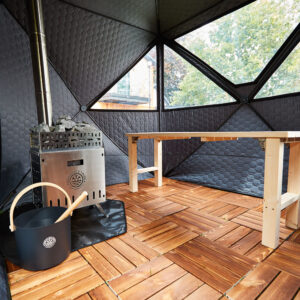
There’s nothing quite like the raw, elemental power of a pop-up sauna. Portable, authentic, and deeply restorative, it’s the perfect way to reconnect with nature and yourself. But to take your sauna ritual to the next level, the right sauna accessories can make all the difference.
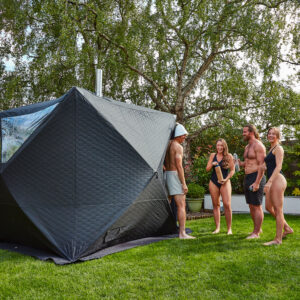
Transform your outdoor space into a personal wellness retreat with the Urban Ice Tribe Sauna Tent. This detailed setup guide walks you through every step, from unboxing to your first steam session, blending practical instruction with the mindful ritual of heat therapy.
Helping men & women release anxieties & limiting beliefs to experience a life of freedom using powerful breathwork, cold water therapy, movement & sound healing.

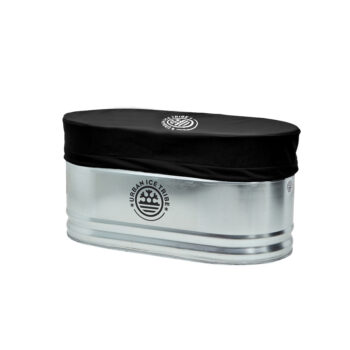

No spam, notifications only about new products, updates, offers and announcements.